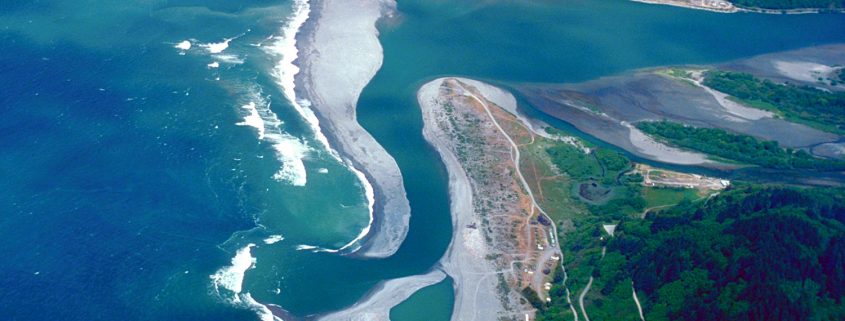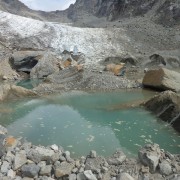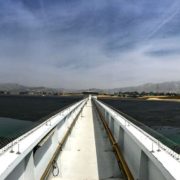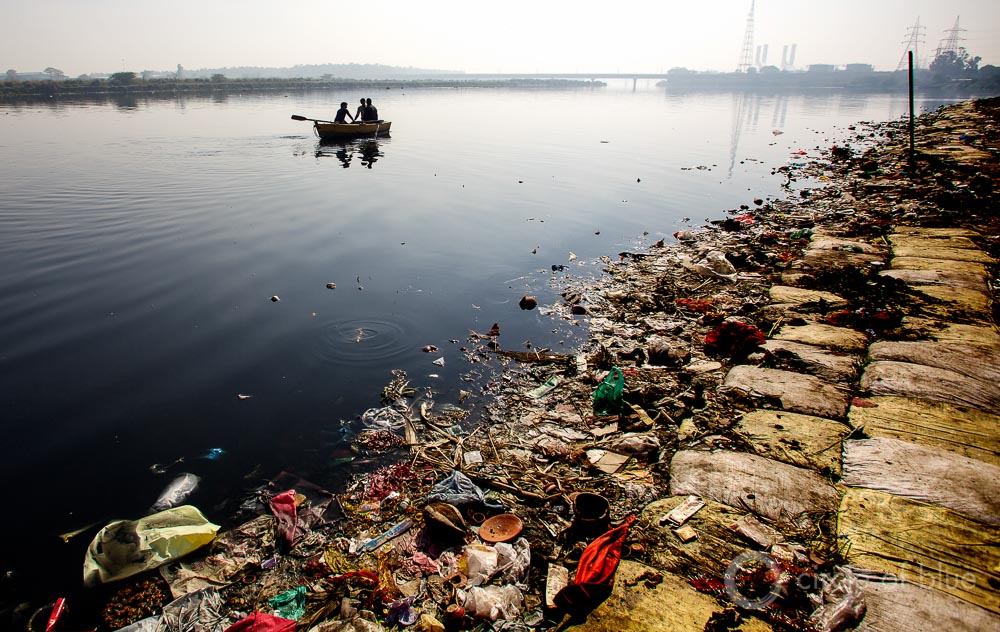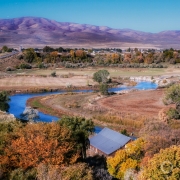Interior Department Supports Klamath Dam Removal
Permitting process still has years to go before demolition begins.
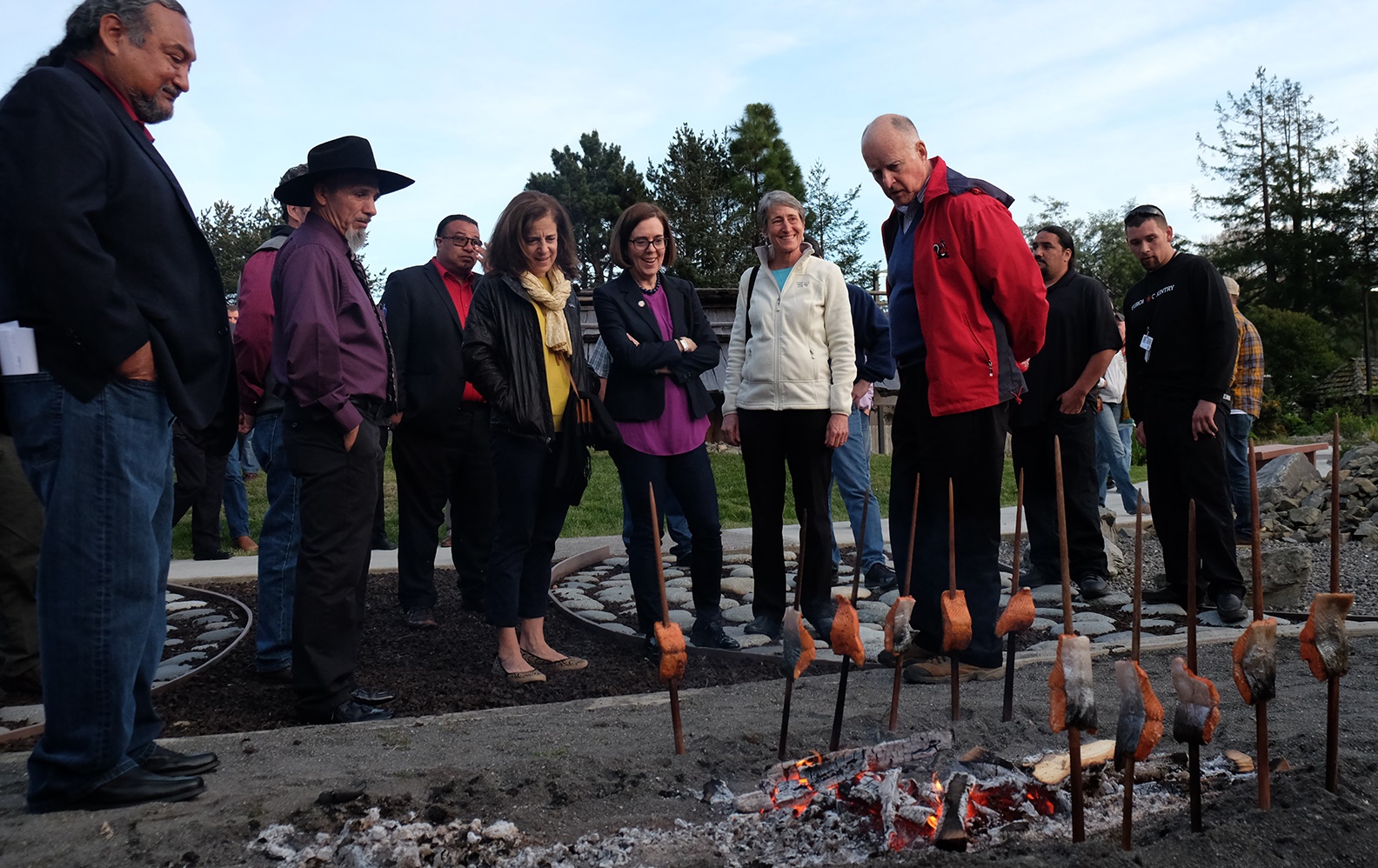
In April 2016, Interior Secretary Sally Jewell, in the cream-colored jacket, joined the governors of California and Washington for the signing of an agreement to remove four Klamath River dams. On October 17, the secretary signaled her full support for the project. Photo courtesy of Interior Department
By Brett Walton, Circle of Blue
Four dams on the Klamath River in California and Oregon are a step closer to being taken down.
In an October 17 letter to federal dam regulators, the Department of the Interior signaled its approval of a multi-party agreement that would result in dismantling the Copco No. 1, Copco No. 2, Iron Gate, and J.C. Boyle dams, which stand along a 30-mile stretch of the Klamath. Though there are innumerable legal steps still to be undertaken, steps that could take four years to complete, the Klamath would be the site of the largest dam removal in U.S. history. The department’s endorsement is a condition of an agreement, signed in April by state, federal, and tribal agencies, as well as private sector and non-profit partners.
“The recommendation and determination I am making today are not entered into lightly,” Interior Secretary Jewell wrote. “Rather, I do so in reliance on the most comprehensive and robust analysis of dam removal ever undertaken.”
Under the agreement, the dams will be transferred from PacifiCorp, the owner, to a third-party organization that will assume legal liability. Electricity rate payers and tax payers in California and Oregon will pay the estimated $US 292 million price tag. No federal dollars are involved. With a capacity of 163-megawatts and no fish ladders at three of the facilities, the dams produced a relatively small amount of power at a large environmental penalty. Taking down the dams represents a savings of more than $US 100 million in capital costs compared to upgrading them to meet new standards.
The secretary’s approval is a sign of the times. Across the country old dams are coming down at an accelerating rate. According to American Rivers, an advocacy group that keeps the most authoritative data, some 1,300 dams have been removed in the United States since 1912. Nearly one-quarter of the total were demolished in the last five years.
But loyalty to the artifacts of the 20th century dam-building boom can run deep, especially in the American West. The Pacific Northwest, where the Klamath flows, is the site of the most intense dam removal debates. Taking down two dams on Washington state’s Elwha River, at a cost of $US 325 million, required more than two decades of false starts and negotiations. The fate of four dams on the Lower Snake River is a source of perpetual disagreement between salmon advocates and inland grain growers, who appreciate the ocean access provided by the dams. Earlier this year, a federal judge ordered federal agencies to study dam removal on the Snake as a means to restoring salmon runs.
With these examples in mind, Jewell was careful to note in her letter that each dam removal is evaluated on its own merits and that support for the Klamath project does not set a precedent. A convergence of factors — tribal water rights, state financial support, and a cooperative private dam owner — make the Klamath a “unique” case, she claimed.
The circumstances are indeed unusual. The Klamath River Basin is the site of long-running animosity over water supplies. Basin leaders thought they have a breakthrough when they negotiated a comprehensive legislative package that guaranteed dam removal, river restoration, and water security for tribes and farmers. But that package died in Congress last year. Opposition to dam removal from House Republicans in California and Oregon helped sink the agreement.
In April, basin leaders regrouped and signed an agreement centered on dam removal.
Unblocking some 420 miles of river habitat would herald the revival of a salmon run that was once the third-largest on the U.S. west coast. The run was so prolific that tribes in the lower watershed could eat a pound of salmon per day. Consumption now is less than five pounds per year. In recent years, the number of salmon returning to the river in the fall is down 90 percent from a century ago.
“Dam removal can rewrite a painful chapter in our history, and it can be done in a manner that protects the many interests in the basin,” Jewell wrote as part of her argument that removal is in the public interest.
The timeline for removal is of uncertain length. According to the April agreement, the dams are supposed to come down in 2020. But, according to Bob Gravely, PacifiCorp spokesman, the ultimate schedule is up to the Federal Energy Regulatory Commission. In September, PacifiCorp filed applications for removal of the four dams and transfer of ownership to the Klamath River Renewal Corporation (KRRC), the third-party group. Regulators will now scrutinize those filings.
“It’s our expectation that FERC will want to see and be comfortable with the KRRC’s detailed decommissioning and removal plans before approving the transfer,” Gravely told Circle of Blue. “This could take a few years.”
Brett writes about agriculture, energy, infrastructure, and the politics and economics of water in the United States. He also writes the Federal Water Tap, Circle of Blue’s weekly digest of U.S. government water news. He is the winner of two Society of Environmental Journalists reporting awards, one of the top honors in American environmental journalism: first place for explanatory reporting for a series on septic system pollution in the United States(2016) and third place for beat reporting in a small market (2014). He received the Sierra Club’s Distinguished Service Award in 2018. Brett lives in Seattle, where he hikes the mountains and bakes pies. Contact Brett Walton

